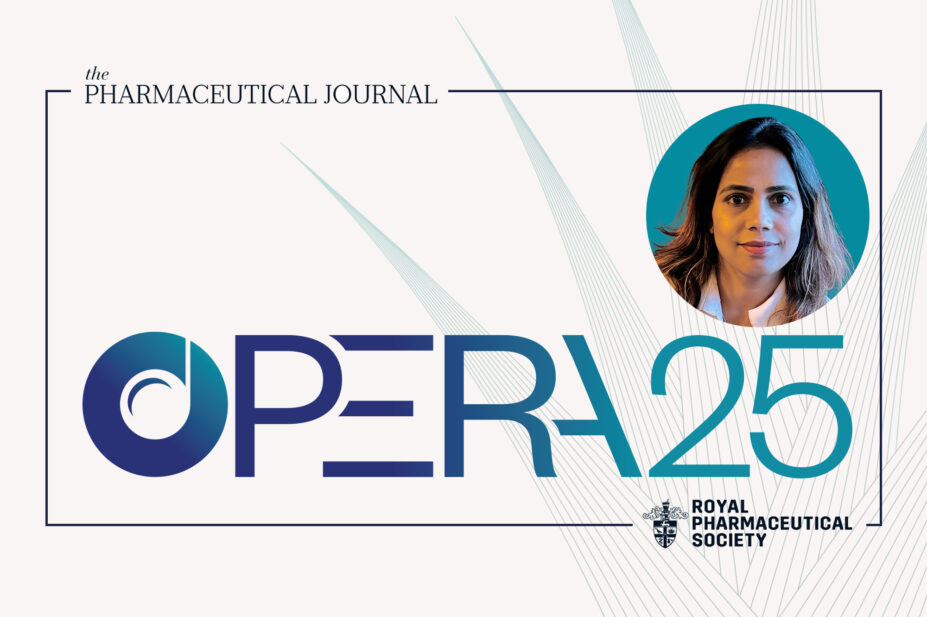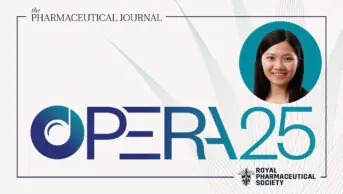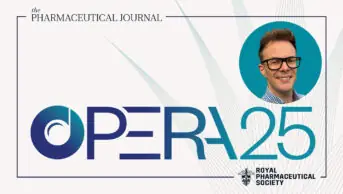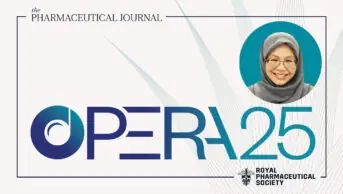
THE PHARMACEUTICAL JOURNAL
Smita Salunke’s research hinges on a simple but powerful question: “What happens if instead of forcing children to adapt to medicines developed for adults, we instead adapt the medicines to children?”
“Consider a clinical in rural India or Nigeria where a mother is really struggling to give a liquid medication to a child, or an oversized tablet that is too big for them to be able swallow. No one has ever really asked these families for their opinion or tried to learn about their experiences,” she continues.
The challenge of using paediatric medicines safely extends beyond the formulation or type of administration device being used. “The worst part of it is that these medicines often contain …excipients, which are never tested in these tiny bodies and some of these are linked to brain toxicity, while others are linked to kidney damage and hypersensitivity reactions in infants.
“This leads to the question: ‘What if the medicine itself is the barrier to healing?’ My research really tackles these challenges.”
Smita’s solution was to create the Safety and Toxicity of Excipients for Paediatrics (STEP) database – the world’s first, and to her knowledge, the only open source platform that records comprehensive and extensive data on the safety and toxicity of different excipients. Building the database was the focus of her PhD and what began as a study of 10 excipients has since grown to cover 75 excipients. It is now an established and trusted tool used in more than 44 countries by thousands of users, including clinicians, hospitals, industry regulators, researchers and pharmaceutical companies. Smita is now in the process of leveraging artificial intelligence (AI) to expand the database to cover more than 300 active ingredients.
Her work is already having global impact. “To give you one story of how the database is being used, a team at Luben University Hospital wanted to reevaluate the [intravenous] paracetamol formulations used for paediatric neonates and were able to screen almost 50 excipients,” she explains. Given the vulnerability of this patient population, there was limited primary evidence available on the safety profile of excipients, but by using the STEP database, clinicians were able to screen the excipients and perform informed risk assessments leading to improved protocols, protecting over 500 neonates each year.
As important as the clinical data is, it’s equally important to listen to the child’s voice
Smita’s research is also helping to improve the drug development process in many of the world’s biggest pharmaceutical companies, incorporating the STEP database into their workflow. “This is something I didn’t expect but it is hugely exciting as it means we are moving from being reactive to being proactive, ensuring that medicines are safe and effective for children right from the start.”
Having access to high quality data is also improving the speed at which paediatric drugs can be developed. “One company actually told us that it saved 12 months from their R&D programme… and they have been able to ensure only safe excipients go into their new product before it even goes into clinical trial,” she added.
Smita’s research also extends to the co-design of medicines and their administration devices with an emphasis on low- and middle-income countries or resource constrained environments, as well as high-income countries. “Even with the very best, lifesaving medicine, if a child can’t swallow it, or if a parent is not able to administer it, it doesn’t work. So I run workshops with my research team in both the low-middle income countries and high-income countries to bring children, parents and healthcare professionals together to better understand and raise awareness of the issues that they have with the design of the devices, medicines and formulations, finding out how they feel about it, what challenges they face and really seeking to understand it from their perspective. Then it becomes more like co-creating the solutions instead them just being a recipient of it.”
The impact of Smita’s work is being witnessed in a variety of ways. She founded the Paediatric Medicines and Healthcare Initiative, a non-profit organisation in India, which works to stimulate research and influence policies locally. She is the Chief Scientific Officer of the European Paediatric Formulation Initiative (EuPFI), where she oversees interdisciplinary projects, bringing together academics, industry professionals and policymakers to tackle challenges in paediatric formulation science. Smita is also an advisor to global organisations, including the World Health Organization (WHO) and the Bill and Melinda Gates Foundation (BMGF).
When asked about her longer-term ambitions, Smita had this to say: “One day I would like to set up the global centre of excellence for paediatric excipients. There is so much to do and many gaps in the data that we still need to fill. We still don’t know enough about neurotoxicity and the effect of excipients on the developing blood brain barrier and there are many rare disorders that we don’t have safe excipients for yet.”
The source of Smita’s motivation is very clear: “Every child’s voice matters. You know, as important as the clinical data is, it’s equally important to listen to the child’s voice and I’m proud to be part of that.“
Panel comments
“A role model with a lifelong commitment to improving children’s health through scientific innovation and advocacy. The nominee’s research has genuine application in pharmacy. The nominee has advocated for pharmacy research, including engagement in activities that share the research with regulators, healthcare professionals and caregivers to raise awareness of paediatric formulation challenges and opportunities.”
“40 peer-reviewed publications, an H-index 17, research is impactful, experienced candidate, excellent outreach.”
Selected publications
- Selecting appropriate excipients for paediatric dosage form — Paediatric excipients risk assessment (PERA) framework — Part 1;
- Navigating the complexities of medicating paediatric patients: Insights from an enteral feeding tube workshop;
- Stepping into small shoes: Gaining user perspective on appropriate administration devices for paediatric medication in India;
- Putting children first: Understanding caregivers’ and children’s perspectives on the usability of oral and respiratory administration devices for paediatric medication;
- A survey to understand parent/caregiver and children’s views on devices used for the administration of oral pediatric medicines in Japan;
- Acceptability of different oral dosage forms in paediatric patients in hospital setting;
- Oral drug delivery strategies for development of poorly water soluble drugs in paediatric patient population;
- Best practices for selection of excipients for paediatrics — Workshop reflection;
- Innovations in paediatric drug formulations and administration technologies for low resource settings;
- Uncovering caregiver concerns: 5 key issues that still remain unresolved in administration of oral medicines for children in India.
You may also be interested in

OPERA 2025: Wallis Lau

OPERA 2025: Ryan Hamilton
